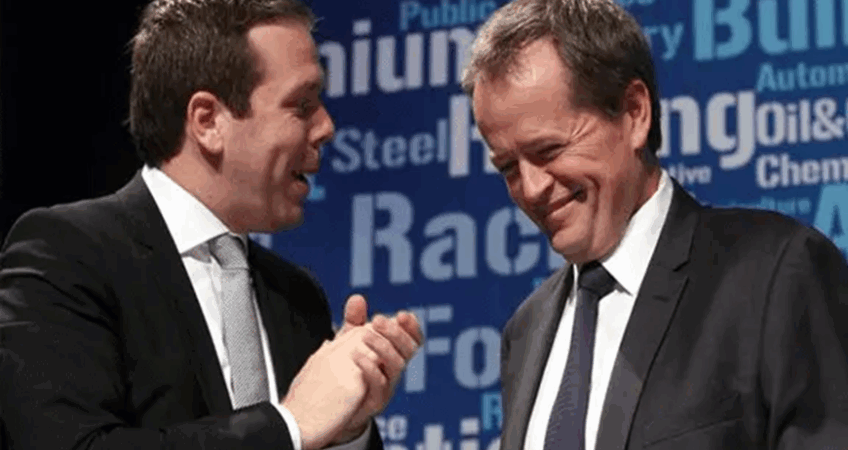What kind of union would sell out its own members, save employers millions, and pocket donations from grateful companies to fund its leaders’ political careers?
Look no further than the Australian Workers’ Union (AWU)—a union whose long record of cosy deals with bosses has weakened workers’ power while elevating its officials into the corridors of political influence.
For decades, the AWU has exemplified “business unionism”: cutting sweetheart deals with employers, suppressing militancy, and trading away members’ conditions for industrial peace and political favours. It’s no surprise that its most famous former leader, Bill Shorten, used the union as a springboard to federal politics.
The AWU’s track record hasn’t improved in the years since Shorten’s tenure. It remains closely aligned with employer interests and the right faction of the Labor Party, continuing its role as a bulwark against more militant, worker-led organising. The union’s opposition to recent campaigns for stronger industrial action in construction, mining, and manufacturing shows that it’s still more concerned with preserving its relationships with big business than fighting for workers.
Despite some cosmetic changes and public rhetoric about “standing up for working Australians,” the AWU continues to undercut more combative unions like the AMWU, CFMEU & ETU. The legacy of deals like the infamous 2005 EastLink agreement—where the AWU traded away site allowances and working conditions in return for employer “donations”—still casts a shadow over the union movement.
Those deals weren’t anomalies; they were part of a systemic pattern. Investigations back in the 2000s showed millions in employer cash flowing into the AWU’s coffers under Shorten’s leadership. Today, while direct “donations” have become politically riskier, the union’s strategy of being a “safe” partner for employers continues.
The AWU’s role as a political machine for the ALP’s right faction hasn’t waned. Its resources and influence are wielded not to build worker power but to shore up parliamentary careers, factional deals, and the ALP’s electoral ambitions.
Meanwhile, workers in industries where the AWU holds coverage continue to face stagnating wages, casualisation, and attacks on hard-won conditions. When militant workers take action, it’s often not just the bosses they’re up against—it’s the bosses’ tame partners inside the union movement.
The union’s history raises important questions about the future of organised labour in Australia. Is a union that prioritises “harmony” with capital at the expense of its members truly part of the solution to declining union density and worsening inequality? Or is it part of the problem?
The answer lies not in defending institutions like the AWU for the sake of “solidarity” with any union leader in a fight, but in supporting the rank-and-file movements, the militant officials, and the unions willing to challenge capital—and their own bureaucracies.
As governments, employers, and conservative forces continue their attacks on unions like the CFMEU, we need to ask: whose side are we on? The side of class collaboration, or the side of class struggle?

